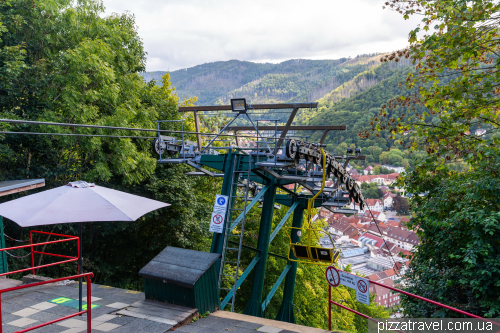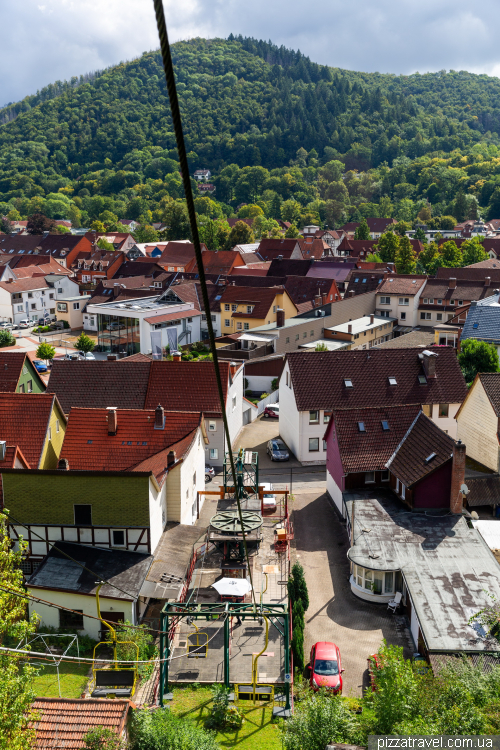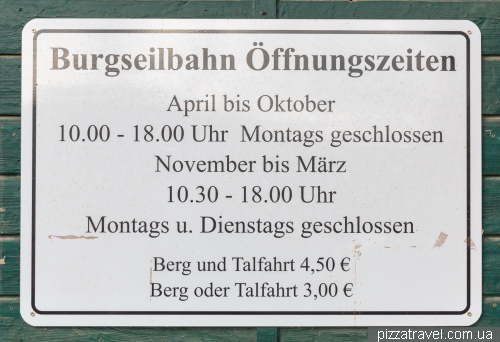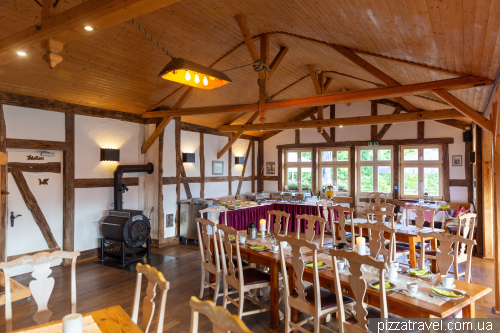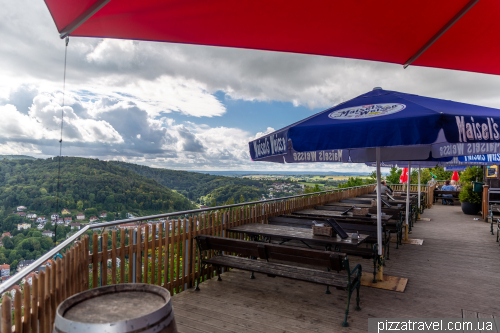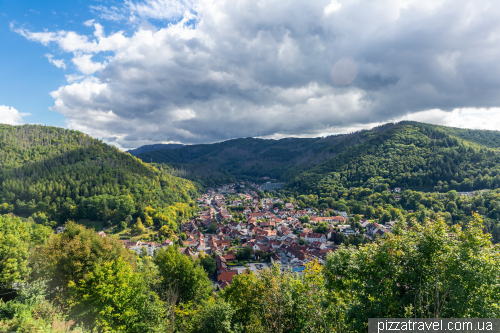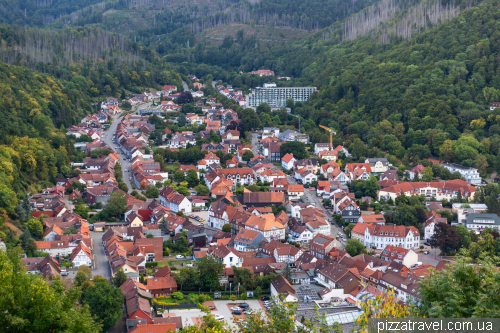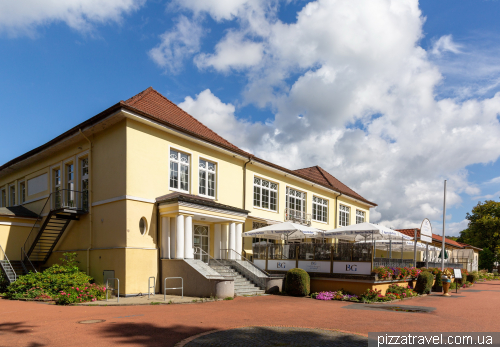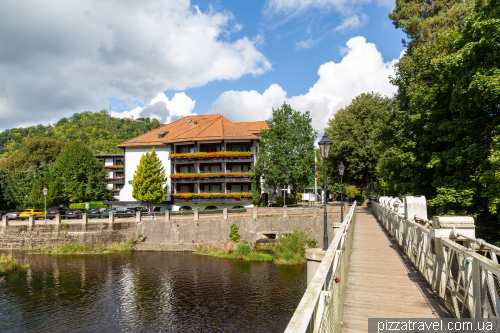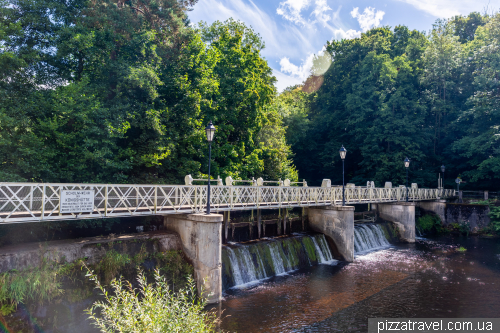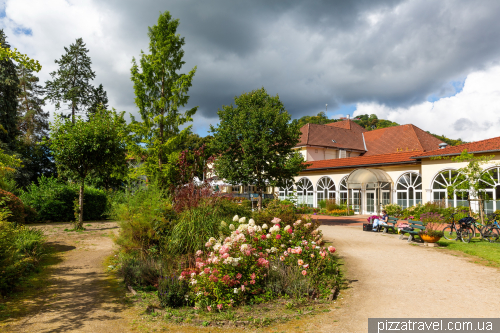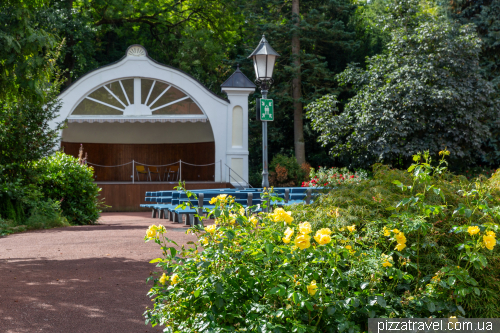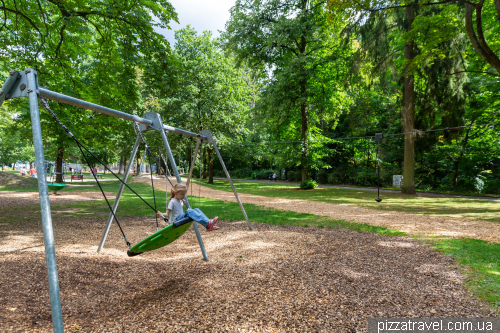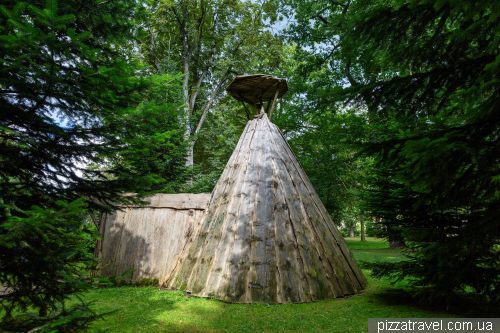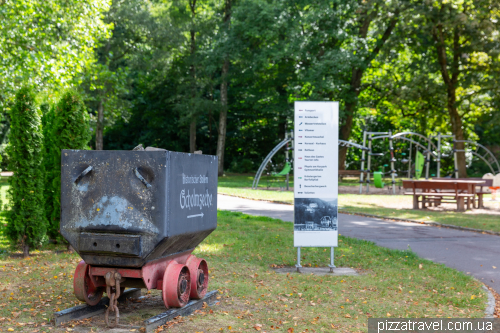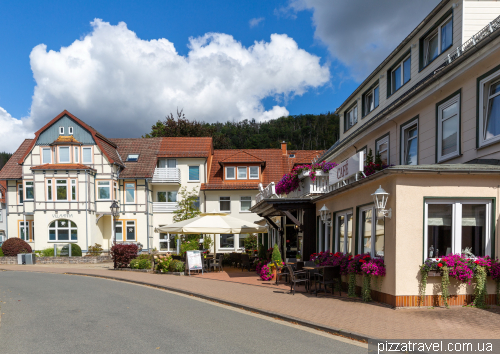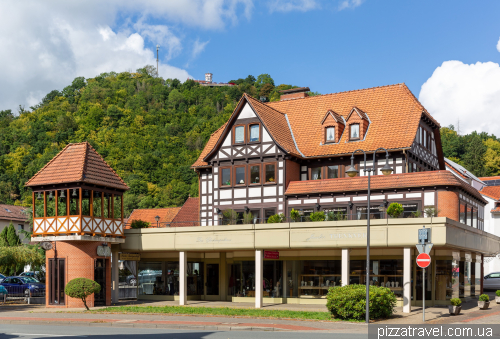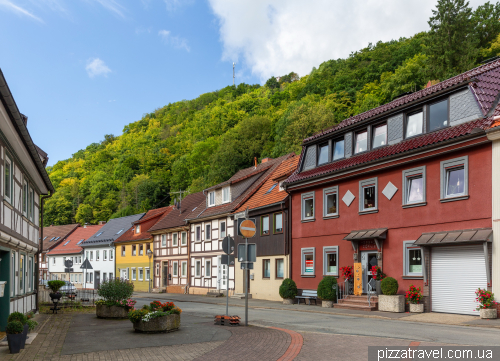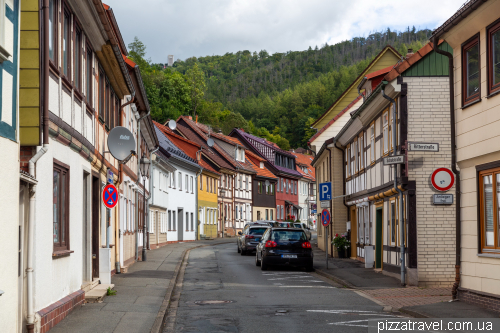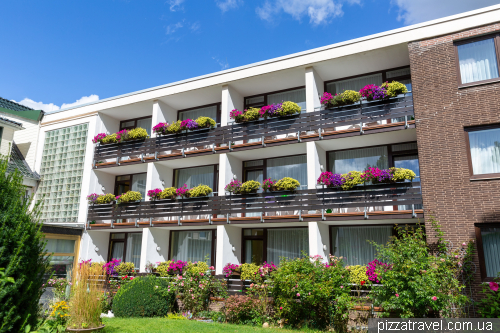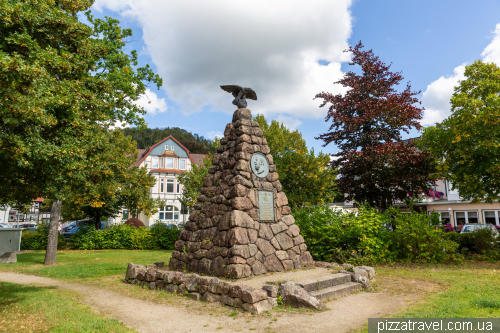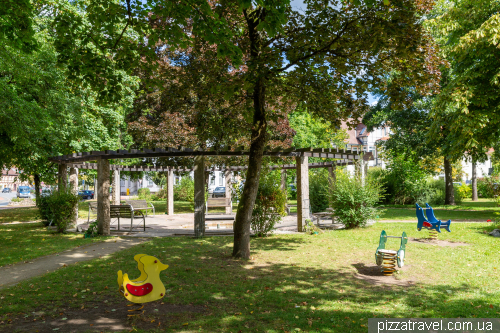We stopped here because we heard about the cable car to the hill where a medieval castle once stood. We found out about it by chance, as this cable car is not mentioned on tourist websites dedicated to the Harz Mountains.
The cable car is operating since 1954.
We did not find the remains of the castle, as they are practically invisible. The castle was called Burg Lutterberg, after the old name of the village. Its construction began in 1180, it was destroyed several times during local wars, and in 1587 it disappeared from the list of castles.
Now, there's a cosy restaurant with a great view at the top of the hill, which is why we came here. The exact date of construction is unknown, but it is definitely over 100 years old.
After the restaurant, we went downstairs and took a walk in the resort park, which covers a fairly large area. There is a river, fountains, sculptures, a nice playground and plenty of space for walking.
The mine cart in the resort park is a reminder of the mining past. Iron ore was mined here from the 16th century, and smelting furnaces (Eisenhütten) operated in the 17th and 18th centuries. When ore mining became economically unprofitable, the mines gradually closed (19th century) and the town was transformed into a resort with mineral springs and thermal baths.
The city also has a historic half-timbered centre.
The town also has a nice swimming pool called VITAMAR, a mountain with an observation tower called Waldgaststätte Bismarckturm, and a historic industrial area called Königshütte, so we will try to visit again in the coming years.
Getting there: There are many car parks in the town. We parked in a paid car park near the shopping centre and the cable car at 51.631417, 10.468500. The nearest railway station is in Bad Lauterberg-Barbis, from where you can take a bus or taxi.
